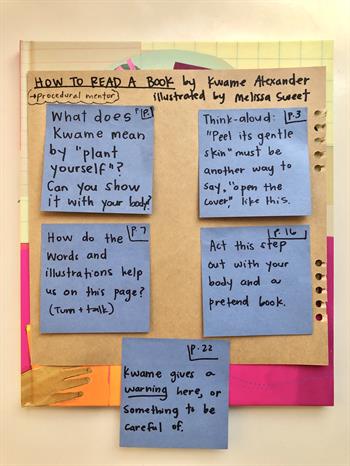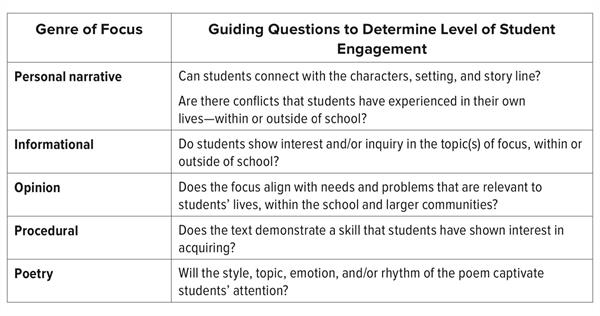
|
| Gaia Cornwell’s Jabari Jumps (Candlewick) illustrates optimism and strategies for releasing fear. |
While writing personal narratives in fall 2020, Kelsey’s class studied a mentor text: Do Like Kyla (Scholastic), written by Angela Johnson and illustrated by James Ransome. Johnson’s text includes repetition, dialogue, and sentence structures that students could approximate in their own writing. Additionally, the storyline was one that many children could connect with during the pandemic—siblings spending time together and going on a walk to the store.
 |
| One student drew a portrait of Ransome in preparation for the virtual visit. |
Young writers were particularly drawn to the illustrations. During Zoom meetings, they watched a series of instructional art videos with Ransome on KitLit TV. They turned shapes into people, tried a technique with watercolors called “glazing,” and illustrated their own stories. Students prepared artwork, books, and questions to share with the illustrator during a virtual school visit.
Many authors and illustrators—like Ransome—have provided access to their work and engaged with children remotely, allowing deeper connections to form between creator and mentor, child and text. Through recorded read-alouds, students can listen to authors read their own texts. Through virtual visits to schools and recorded interviews, authors and illustrators give students an opportunity to ask questions about the texts they are studying, writerly processes, and craft moves. With growing access to texts and their creators across multiple platforms, mentor texts can be selected with responsiveness to students and their communities.
What is responsive writing instruction?
Responsive writing instruction activates an asset-based mind-set when making modifications to instruction. It requires that teachers see students and answer these questions:
- How do we meet students where they are?
- …with what they have?
- …in ways that celebrate who they are?
Our book, The Responsive Writing Teacher: A Hands-on Guide to Child-Centered, Equitable Instruction, frames responsive writing instruction within four domains of responsiveness:

- Academic responsiveness: ensuring new skills and content match students’ abilities and goals
- Linguistic responsiveness: ensuring language(s) used in instruction and in the classroom environment are accessible and inclusive of home language(s)
- Cultural responsiveness: ensuring a diverse and authentic representation of authorship, characters, and content within the texts and resources
- Social-emotional responsiveness: ensuring a safe, supportive, and engaging environment for taking risks and overcoming challenges in the writing process
Responsive instruction within these domains centers students—establishing an evolving and deepening understanding of them as writers and community members and people.
Knowing and honoring the skills, languages, cultures, perspectives, and interests that students contribute to a classroom community opens up possibilities for planning and teaching with abundance. Planning and teaching that is inclusive. Planning and teaching that is engaging. Planning and teaching that is equitable.
Responsive mentor text selection across the domains
 Using mentor texts is an important component of writing instruction. Mentor texts invite writers into the process, immersing them in words, inspiring them to try, and demonstrating the power that is possible through words and shared ideas.
Using mentor texts is an important component of writing instruction. Mentor texts invite writers into the process, immersing them in words, inspiring them to try, and demonstrating the power that is possible through words and shared ideas.
To evaluate a mentor text for academic responsiveness, consider the following questions:
- Does the text model many of the genre-specific elements and craft moves that students will learn to include in their writing?
- Will students be able to approximate such text features?
To evaluate a mentor text for linguistic responsiveness, consider the following questions:
- Is there accessible vocabulary and vocabulary supports (e.g., illustrations, labels, captions, glossary) that develop background knowledge?
- Are there grammatical structures that are at a level at which students can note, emulate, and approximate?
- Does the text feature languages that students speak or immerse students in new languages/dialects?
 |
| On this page from Birdsong (Greystone Kids) by Julie Flett, readers can study craft moves that include, but are not limited to, the plot, mood, word choice, conventions, repetition, and sentence structures. |
To evaluate a mentor text for cultural responsiveness, we recommend using this chart, inspired by a presentation from Sonja Cherry-Paul:
|
Representation
Are characters doing everyday things?
Are they portrayed as victims?
Is there a savior?
|
Context
What are characters in the book doing?
Are they doing it in present time? Not just in history?
|
|
Authorship
Who is the author?
What makes the author uniquely positioned to tell the story?
|
Content
Does the text have an authentic voice?
Will students want to read this book?
|
Chart adapted from the NCTE presentation “Building Better Readers Through Book Clubs” by Sonja Cherry-Paul
To evaluate a mentor text for social-emotional responsiveness, this chart provides guiding questions for different genres:

Because there is no one-size-fits-all curriculum; students’ skills, languages, identities, and interests are diverse; and constraints continue to drive creativity, responsiveness—which has always been essential—is critical now more than ever. For us, the four domains have become a way of thinking, analyzing, and acting, as we continue to ask: How do we meet students where they are, with what they have, in a way that celebrates who they are?
Melanie Meehan and Kelsey Sorum will be leading a free webinar, “Responding to Writers, Responding to the World: Instruction That Centers, Celebrates, and Empowers Students,” on March 17, 2021, 5:00–6:00 p.m. ET. Register now to reserve your spot.
Melanie and Kelsey's book, The Responsive Writing Teacher: A Hands-on Guide to Child-Centered, Equitable Instruction, is available now from Corwin Literacy. Use the discount code ILA25 for a 25% discount plus free shipping on purchases from corwin.com.
Melanie Meehan has been the elementary writing and social studies coordinator in Simsbury, Connecticut since 2012. She is a coauthor of Two Writing Teachers, a blog dedicated to the teaching of writing, as well as a regular contributor to Choice Literacy. Her book, Every Child Can Write, was published by Corwin Press in October 2019. Follow her on Twitter at @MelanieMeehan1.
Kelsey Sorum spends each day coconstructing joyful, integrated literacy experiences alongside nearly 30 kindergartners at a progressive public school in the Brooklyn neighborhood of New York City where she lives. Kelsey’s work is featured She presents at local and national literacy conferences as an advocate for early childhood education. The Responsive Writing Teacher: A Hands-on Guide to Child-Centered, Equitable Instruction, is her first published book. Connect with her on Twitter at @KelseySorum.